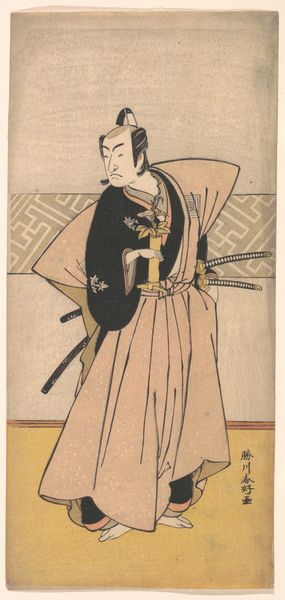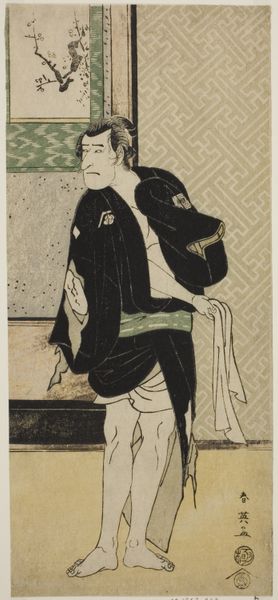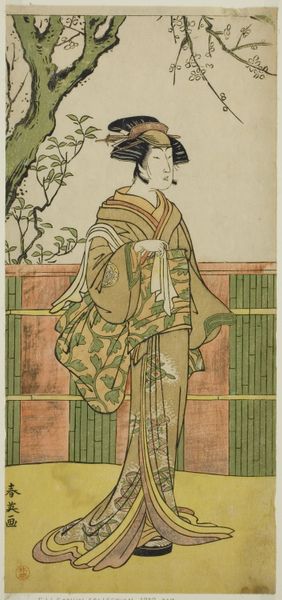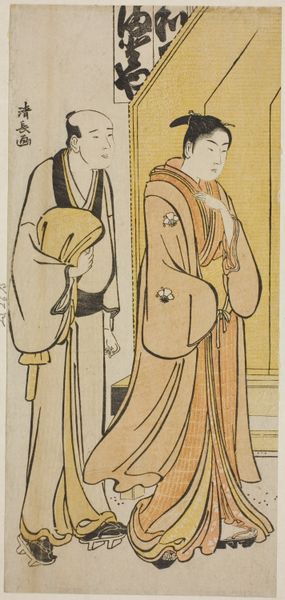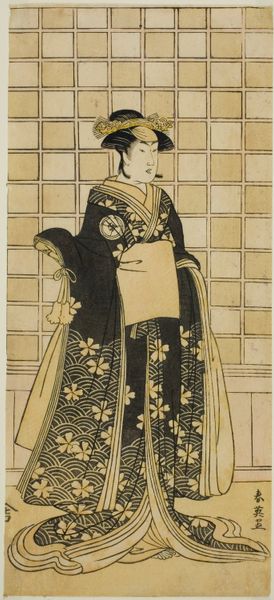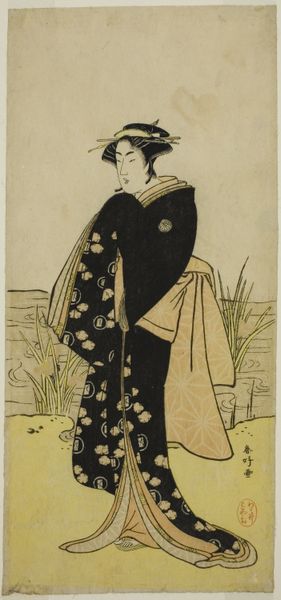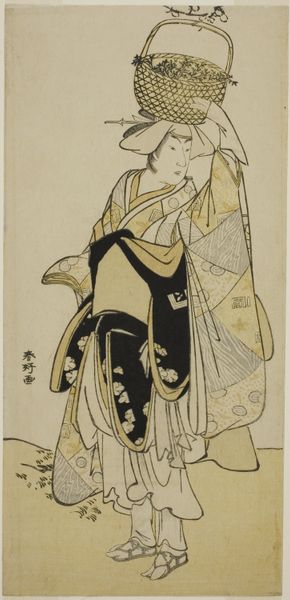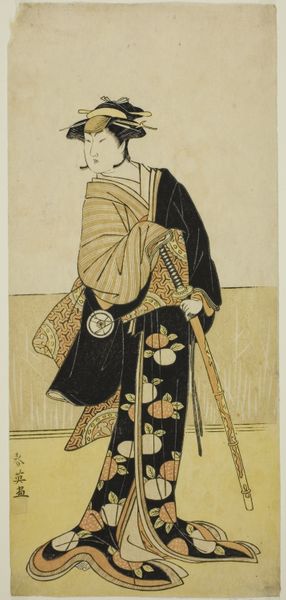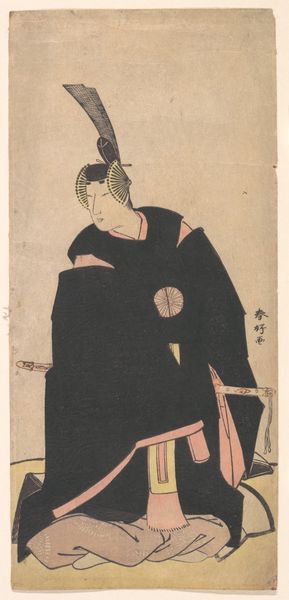
The Actor Segawa Kikunojo III as Otoma (?) in the Play Sayo no Nakayama Hiiki no Tsurigane (?), Performed at the Nakamura Theater (?) in the Eleventh Month, 1790 (?) c. 1790
0:00
0:00
print, woodblock-print
#
portrait
#
ink painting
# print
#
asian-art
#
ukiyo-e
#
figuration
#
woodblock-print
#
genre-painting
Dimensions: 33.2 × 15 cm (13 1/8 × 5 7/8 in.)
Copyright: Public Domain
Katsukawa Shun'ei’s woodblock print from 1790 depicts the actor Segawa Kikunojo III, embodying the female role of Otoma. Notice the delicate cherry blossom pattern adorning the kimono. In Japan, the cherry blossom, or sakura, is more than just a pretty flower; it's a potent symbol deeply woven into the cultural tapestry. Sakura represents the transient nature of life, a poignant reminder of beauty’s fleeting existence. From ancient pottery to contemporary art, the motif has journeyed through time, each era layering new meanings onto its delicate petals. Consider Botticelli’s "Primavera," where flowers scattered across the meadow evoke a similar sense of ephemeral beauty and renewal. The poignant symbolism of the cherry blossom is deeply rooted in the collective consciousness, triggering a spectrum of emotions – joy, melancholy, and a profound awareness of life’s impermanence. It’s this very emotional resonance that ensures its perpetual rebirth in art across millennia.
Comments
No comments
Be the first to comment and join the conversation on the ultimate creative platform.
